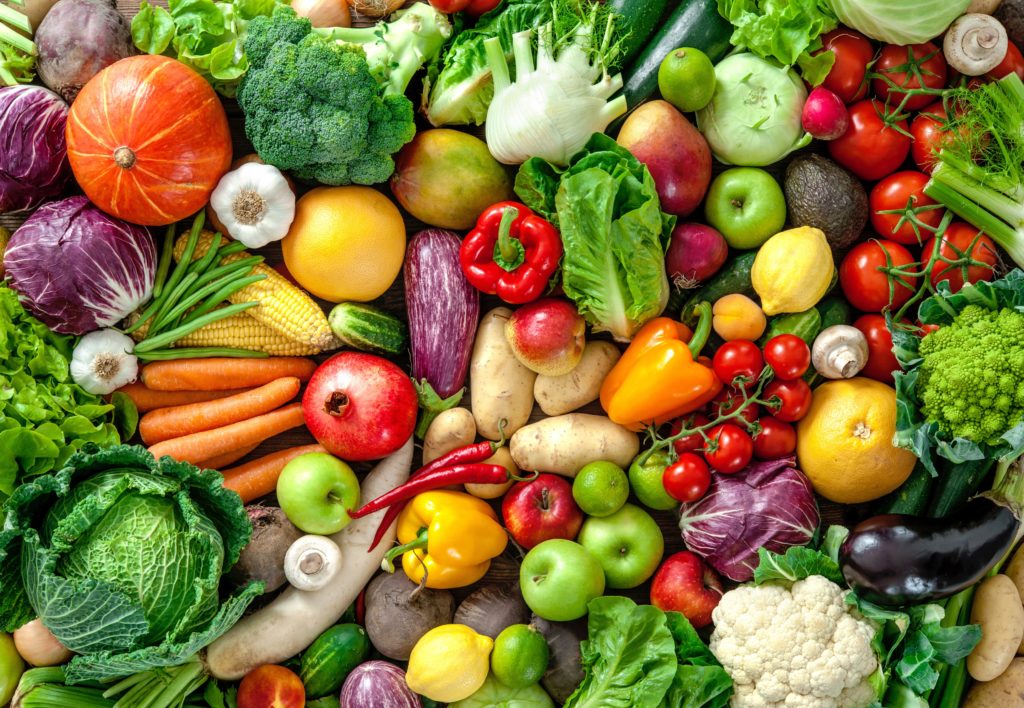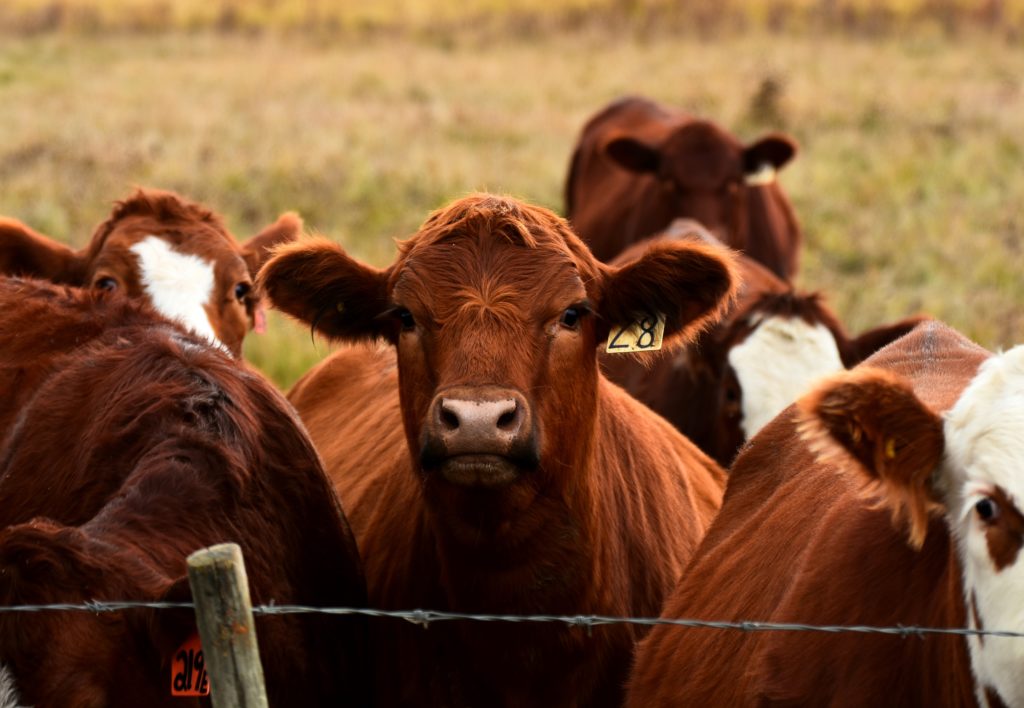Food and Color Additives – Generally Recognized As Safe (GRAS)
The U.S. Food and Drug Administration (FDA) does not have the authority to approve food products before marketing, i.e., no premarket approval for the finished food products is necessary. However, the FDA has the authority to approve certain ingredients before they are used in foods. Those include food additives, such as substances added intentionally to food, and color additives. Any substance that is reasonably expected to become a component of food is a food additive that is subject to premarket approval by the FDA, unless the substance is generally recognized as safe (GRAS).
Similarly, any substance that is added to food and imparts color to the food is a color additive. Any color additive in food is deemed unsafe unless its use is either permitted by regulation or exempt by regulation. Unlike the definition for food additive, there is no GRAS exemption for color additives. Any food that contains an unsafe color additive is adulterated under section 402(c) of the FD&C Act.
Food Additives
Companies that want to add new food additives to food are responsible for providing FDA with information demonstrating that the additives are safe. FDA experts review the results of appropriate tests done by companies to ensure that the food additive is safe for its intended use. An approved food additive must be used in compliance with its approved uses, specifications, and restrictions.
Food Contact Substances
Some food additives are food contact substances that could migrate into food, such as coatings, plastics, paper and adhesives, as well as colorants, antimicrobials, and antioxidants found in packaging. They undergo a different review process. The same safety standards still apply, but the food contact notification process is specific to the identified manufacturer or supplier. If at the end of the review period FDA does not object, the food contact notification becomes effective and the food contact substance may be legally marketed.
In-Depth Coverage: Country of Origin
- Country of Origin of Imported Merchandise
- Customs Ruling: Country of Origin
- Country of Origin: Food Products
- Country of Origin: Chemical and Pharmaceutical Products
- Country of Origin & Country of Manufacture: CBP vs. FDA
- Country of Origin: Substantial Transformation or Country of Assembly Test
- Country of Origin and Free Trade Agreement
- Country of Origin and Section 301
Determination of the Regulatory Status of a Food Ingredient
The decision tree below will help in determining the regulatory status of a food ingredient. It is the responsibility of the manufacturer of any food to ensure that all ingredients used are of food-grade purity and comply with specifications and limitations in all applicable authorizations. The overall regulatory status of food is affected by the regulatory status of each individual food ingredient. To determine compliance, consider each authorization to be composed of three parts:
- The identity of the substance,
- Specifications including purity and physical properties, and
- Limitations on the conditions of use.
What does ”GRAS” mean?
Certain food ingredients, such as those that are considered “generally recognized as safe” (GRAS) by scientific experts, do not require premarket approval as a food additive. FDA has a voluntary notification process under which a manufacturer may submit a conclusion that the use of an ingredient is GRAS.
The Federal Food, Drug, and Cosmetic (FD&C) Act defines a “food additive” as “any substance the intended use of which results or may reasonably be expected to result, directly or indirectly, in its becoming a component or otherwise affecting the characteristics of any food . . if (1) the substance is not generally recognized, among qualified experts, as having been adequately shown to be safe under the conditions of its intended use, or (2) the use of the substance is not otherwise excepted from the definition of a food additive.
Under this definition, a substance that is GRAS under the conditions of its intended use is not a “food additive” and thus, not subject to mandatory premarket review by FDA.
Many substances intentionally added to beverages and other conventional foods are food additives and thus require premarket approval based on data demonstrating safety.
Regardless of whether the use of a substance is a food additive use or is GRAS, there must be evidence that the substance is safe under the conditions of its intended use. FDA has defined “safe” as a reasonable certainty in the minds of competent scientists that the substance is not harmful under the conditions of its intended use. The specific data and information that demonstrate safety depend on the characteristics of the substance, the estimated dietary exposure3, the population that will consume the substance, and other relevant considerations.
In-Depth Coverage: Importing Food Products
- What is FDA Food Safety Modernization Act (FSMA)?
- Prior Notice of Imported Foods
- FDA Food Facility Registration
- Risk-Based Preventive Controls for Human Food
- Risk-Based Preventive Control for Animal Food
- Protect Food against Intentional Adulteration
- What is Foreign Supplier Verification Program (FSVP)?
- What is FSMA Produce Safety Rule?
If an ingredient is GRAS for one use, is it GRAS for all uses?
Not necessarily. Under section 201(s) of the FD&C Act, it is the use of a substance, rather than the substance itself, that is eligible for classification as GRAS. An evaluation of the safety of the use of an ingredient includes information about the characteristics of the substance, the estimated dietary exposure under the intended conditions of use, and the population that will consume the substance. Dietary exposure to a substance depends on the food categories in which it will be used and the level of use in each of those food categories.
Some uses of a human food substance are intended for a narrowly defined population. For example, some human food substances are intended for consumption by newborn infants who consume infant formula as the sole item of the diet; in such a circumstance, there may be special considerations associated with that population but not with the general use of the food substance.
Likewise, some substances intended for use in animal food are intended for specific animal species (such as cattle or swine), or for a specific life stage of an animal species; a substance that is safe for use in one animal species may not be safe for use in another species or in the same species at a different stage of life.
Is a substance that is used as a dietary ingredient in a human dietary supplement eligible for classification as GRAS?
Under section 201(s) of the FD&C Act, a substance that is GRAS under the conditions of its intended use is excluded from the definition of a food additive. In addition, under section 201(s) of the FD&C Act the term “food additive” does not include a dietary ingredient used or intended for use in a dietary supplement as defined in section 201(ff) of the FD&C Act.
In other words, because dietary ingredients intended for use in dietary supplements are already excepted from the food additive definition, their GRAS status for that use is irrelevant because they are already exempt from the food additive approval requirement. Therefore, although a dietary ingredient used in a dietary supplement must not adulterate the supplement under section 402(f) of the FD&C Act, it does not have to be GRAS for its intended use in the supplement.
However, other ingredients intended for use in dietary supplements, such as binders, excipients, and fillers, are not exempt from the food additive definition and must meet the same requirements as substances added to conventional foods. In other words, non-dietary ingredients added to a dietary supplement must be used in accordance with a food additive regulation or be GRAS for their intended use (unless they qualify for another exception to the food additive definition).
In-Depth Coverage: Importing Medical Device
Must FDA Approve GRAS Substances?
No. If the use of a food substance is GRAS, it is not subject to FDA’s premarket review and approval as a food additive.
What is the GRAS notification procedure?
The GRAS notification procedure is a voluntary procedure under which any person may notify the FDA of a conclusion that a substance is GRAS under the conditions of its intended use in human food (21 CFR part 170, subpart E) or animal food (21 CFR part 570, subpart E). Although the GRAS notification procedure is voluntary, FDA strongly encourages any person who intends to market a food substance on the basis of the GRAS provision to submit a GRAS notice to the FDA.
Can the use of a substance be GRAS even if it is not listed by the FDA?
Yes. Because the use of a substance that is GRAS is not subject to premarket review and approval by FDA, it is impracticable to list all substances that are used in food on the basis of the GRAS provision. The use of a substance is GRAS because of widespread knowledge among the community of qualified experts, not because of a listing or other administrative activity.
Quick Link To U.S. Customs & Import Requirements
FDA-Regulated Products and Import Requirements
- What is Food Safety Modernization Act (FSMA)?
- Prior Notice of Imported Foods
- Food Facility Registration
- Risk-Based Preventive Controls for Human Food
- Risk-Based Preventive Control for Animal Food
- Standards for the Growing, Harvesting, Packing, and Holding of Produce for Human Consumption
- What is Foreign Supplier Verification Program (FSVP)?
- Protect Food against Intentional Adulteration
- FDA Regulated Product in Foreign Trade Zone (FTZ)
- Entry Review Process for FDA Regulated Products
- Country of Origin VS Country of Manufacture
- Foods Regulated by FDA or USDA: What is the Difference?
- Label and Labeling Claims for Conventional Food and Dietary Supplements
- What is USDA Country of Origin Labeling (COOL)?
- Import for Export of FDA Regulated Products
- FDA Regulated Products in Personal Baggage or Sending by Mail or Courier
- International Mail Facility (IMF) and FDA Regulation
- Importing Biological Product Regulated by CBER
- Importing Cosmetics and Voluntary Cosmetic Registration Program (VCRP)
- Importing Drugs into the U.S.
- Importing OTC Drugs into the U.S.
- Importing Veterinary Drugs into the U.S.
- Importing Tobacco Products into the U.S.
- Importing Medical Devices into the U.S
- Importing Food Products into he U.S.
- Importing Radiation-Emitting Products into the U.S.
Customs Clearance and Import Requirements
- Customs Clearance of Imported Merchandise
- What is Section 321 Entry?
- What is Automated Commercial Environment (ACE)
- What is an Automated Broker Interface (ABI)?
- Who is Ultimate Consignee?
- What is Non-Resident Importer Program?
- Country of Origin of Imported Merchandise
- What is the Country of Assembly?
- What if the FDA's Country of Manufacture?
- Marking of Country of Origin on U.S. Imports
- What is Customs Bond?
- Reconciliation Prototype and Bond Rider
- Who Needs a Customs Broker?
- What is Customs Ruling Program?
- Classification of Imported Goods
- How is imported merchandise appraised?
- What are Import Quotas?
- What are Trade Remedy Duties?
- Antidumping Duty (AD) and Countervailing Duty (CVD)
- What is Foreign Trade Zone (FTZ)?
- What is Importer Security Filing (ISF)?
- What is Temporary Importation under Bond (TIB)
- What is In-Bond Process?
Guidance on customs & logistics solution for traditional and e-commerce importers and exporters
Importer Security Filing (ISF)
An ISF is required when cargo (ocean only) laden on vessel at a foreign port is destined for shipment to the U.S. Under ISF rule, some importing information and details regarding cargo must be transmitted to the CBP at least 24 hours before goods are loaded onto the vessel.
Customs Clearance
All goods imported into the U.S. are required to be declared to CBP. Our customs broker will help you stay in compliance with customs laws and regulations and clear your goods quickly and efficiently with our electronic Automated Commercial Environment (ACE) and Automated Broker Interface (ABI) Single Window System.
Freight Forwarding
Looking for a freight forwarding partner? To move your cargo from its current location through customs to its final destination we will partner with you to find the best way for your business. Whatever your transportation, logistics or customs clearance needs, we will do our best to customize a solution for your needs.
Warehousing & Distribution
Our warehouse facility offers great potential for serving as a regional hub with over 145,000 SF storage capacity close to Los Angeles Airport & Los Angeles/Long Beach Sea port. With our extensive experience in freight services, your import/export cargo will be handled quickly and effectively.
Section 321 Entry
Section 321 entry allows importing free of duty and tax for shipments imported by one person on one day having a fair retail value in the country of shipment not more than $800. We provide our resident and non-resident clients with dedicated ACE eManifest solutions for Section 321 entry of all modes of transportation.
Non-resident Importer Program
If you want to sell your products in U.S. marketplaces, but you are a business owner located outside of the U.S. and do not have an entity or presence in the U.S., you need to be established as a Foreign Importer of Record before your products can be imported into the U.S. We can help you.
E-Commerce
The Internet has made it easy to find and purchase items from almost anywhere in the world. Our e-commerce experts will help you find the right solution for your international transportation, customs clearance, and delivery to your final destination. We also provide value-added repackaging, warehousing and distribution services.
























